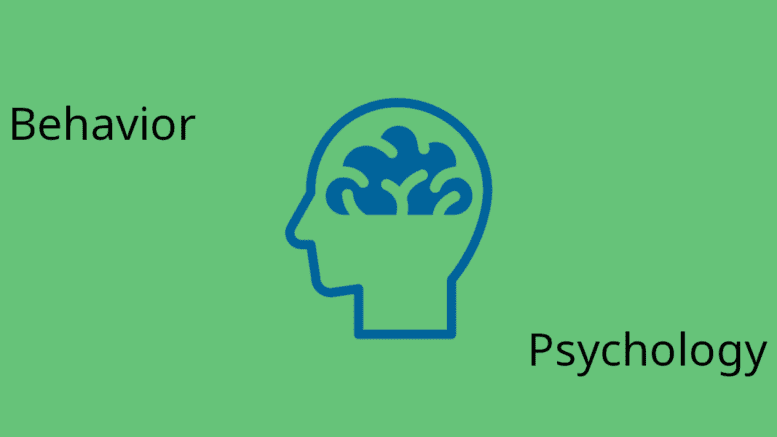by April Nisan Ilkmen, Adler University, [This article first appeared in The Conversation, republished with permission]
During former President Donald Trump’s campaign and presidency, the word narcissism became something of a buzzword. And in recent years the word has been popularized on social media and in the press.
As a result, social media and other online platforms are now rife with insights, tips, stories and theories from life coaches, therapists, psychologists and self-proclaimed narcissists about navigating relationships with narcissists or managing one’s own symptoms.
The term “narcissism” is commonly used to describe anyone who is egotistical and self-absorbed. Someone who exhibits narcissistic traits may have a personality disorder known as narcissistic personality disorder.
Over the past decade, the rapid development of social networking sites has caused profound changes in the way people communicate and interact. Social media websites such as Facebook, TikTok and Instagram can feel like a narcissistic field day. In seconds, one can share self-enhancing content – flattering pictures, boastful statuses and enviable vacations – with a vast audience and receive immediate feedback in the form of “likes” and reinforcing comments from followers.
As a licensed couple and family therapist who specializes in relationship issues related to attachment, I have worked with many couples with one partner who is on the narcissistic personality disorder spectrum. One reason the narcissistic partner is challenging to treat is that they’re adept at persuading their partner that they are the dysfunctional one.
The “malignant narcissist” may be the most worrisome type of all.
Defining narcissism
Dr. Otto Kernberg, a psychiatrist who specializes in personality disorders, differentiates between normal and pathological narcissism using a framework that assesses a person’s capacity to participate in satisfactory romantic relationships.
Normal narcissism refers to a well-integrated sense of self that is generally for the greater good, such as a healthy sense of pride in oneself and one’s accomplishments. Pathological narcissism describes extreme fluctuations between feelings of inferiority and failure with a sense of superiority and grandiosity.
Each person has a bit of normal narcissism within them. This can take the form of having self-confidence and even a modicum of entitlement while still displaying empathy and emotion. Research shows the role of healthy narcissism occurs at subclinical levels in everyday populations and can help motivate people to enhance themselves and to progress in life.
But when striving for achievement or gain involves an excessive desire for attention and approval and an outsize, grandiose sense of self, it is no longer in the realm of healthy narcissism.
A pathological narcissist sees everyone else as an extension of self. Those in a narcissist’s life, especially in their inner circle, must always demonstrate perfection because they contribute to the narcissist’s own self-image. Like many personality disorders, narcissism manifests itself in intimate relationships through the cycle of idealization and devaluation, creating the concept of the so-called toxic relationship.
Finding a victim
A narcissist chooses their partners based on whether the partner affirms their grandiose sense of self. And since having that affirmation is the key driver for a narcissist’s relationship, they are generally not interested in learning a lot about the other person.
The things that attract narcissists are not the personal characteristics of the other person or even the connection that comes from the relationship. If the person has a reputable status in their eyes and they find the person appealing, they are usually willing to move forward quickly in the relationship. Unfortunately, as a narcissist’s genuine interest in the other person is typically superficial, the narcissist often loses interest in the relationship just as suddenly as they began it.
Narcissistic abuse is a form of extreme psychological and emotional abuse marked by manipulative communication and intentional deception for exploitation by a person who meets the criteria for pathological narcissism.
Some key traits of narcissism include a sense of entitlement, a lack of boundaries and a need for attention.
Forms of narcissism
Narcissistic abuse can be insidious and hard to recognize. Since the signs of narcissistic abuse aren’t always obvious, it’s important to name and recognize them.
- Gaslighting: The narcissist uses a manipulation strategy known as gaslighting to make the victim doubt his or her own ability to make a decision or take an action. People use this technique to maintain control over the other person’s sense of reality. When gaslighting occurs, victims are left feeling doubtful and insecure and some even have difficulty recognizing that they are being gaslighted. In some relationships, a co-dependency develops between the narcissist and the victim in which the victim accepts the narcissist’s position of authority.
- Victim mentality: This mindset, which is common for those with narcissistic personality disorder, implies that everybody owes the narcissist something. In my clinical experience, I have often witnessed the narcissist creating a false narrative about how they did not get what they were supposed to get in life because they were wronged by others. This story allows them to feel entitled to have anger and resentment toward anyone, especially toward people they perceive as successful.
- Cycle of idealization and devaluation: Narcissists form polarized beliefs about themselves and others, meaning that their opinions of themselves and others can be exceptionally positive or unrealistically negative.
During the idealization stage, the narcissist creates a sense of unbreakable connection with the victim. No matter what type of relationship it is – whether romantic, professional or familial – it moves fast and has an intense quality to it.
At some point, the narcissist’s partner will disappoint them in some way, usually not on purpose. As a response, the narcissist will criticize every move, jump to conclusions and react dramatically to these perceived disappointments. The narcissist will begin to see their partner as flawed and accuse them of not being the perfect partner they were supposed to be. This phase is characterized by verbal and physical abuse, humiliation, bullying and smearing.
Feelings of emptiness: According to Kernberg, the psychiatrist mentioned above, the inability of narcissists to develop fulfilling and lasting relationships results in a chronically empty internal world.
Narcissistic personality disorder patients will often find themselves “waking up” at age 40, 50 or 60 with a desperate sense of loss. The narcissist often struggles with feelings of emptiness that stem from relying on a false grandiose sense of self that prevents them from being vulnerable. In turn, they project their feelings of emptiness onto the partner in a relationship. Many of these patients suffer from a loss of identity and sense of helplessness and feel alienated from the world.
Navigating relationships with a narcissist
Since the narcissist often develops controlling and manipulative relationships with the partner’s friends and family, the victim may feel reluctant to rely on their intimate circle for support. Finding a therapist who specializes in narcissistic abuse recovery is the first step to start the healing process.
I have had a lot of patients tell me that their therapists aren’t familiar with the term “pathological narcissism.” If they’re not, I suggest that, if possible, these patients find therapists who specialize in emotionally focused therapy or transference focused therapy. These therapies help identify destructive patterns of communication as they arise during a therapy session, rather than focusing only on interactions that arise outside of therapy.
From my perspective, relationships with a narcissistic partner are some of the hardest to treat. The narcissistic partners are often unwilling to participate in therapy because they will not admit that they need help and find it challenging to collaborate with the therapist. Effective couples therapy is rare but not impossible and can occur only when the narcissistic partner acknowledges that their expectations are unreasonable and destructive.
April Nisan Ilkmen, PhD Candidate in Couple and Family Therapy, Adler University
This article is republished from The Conversation under a Creative Commons license. Read the original article.


